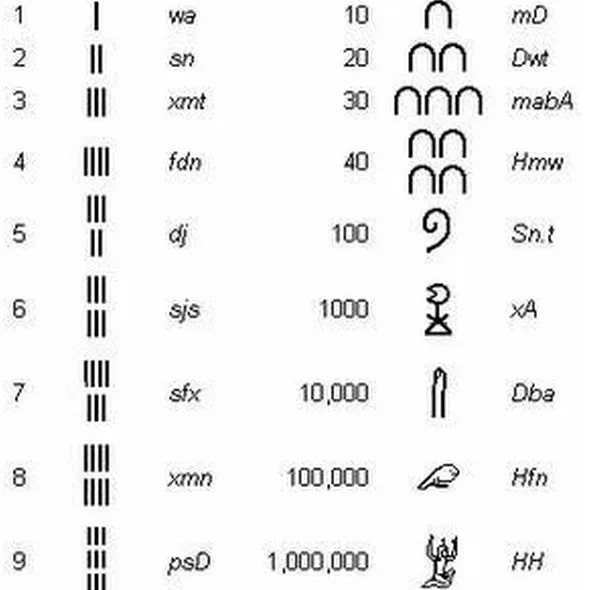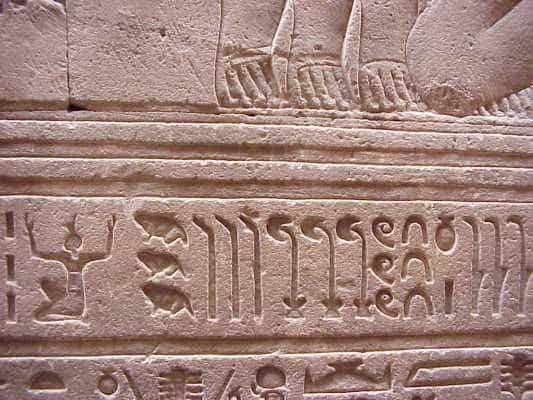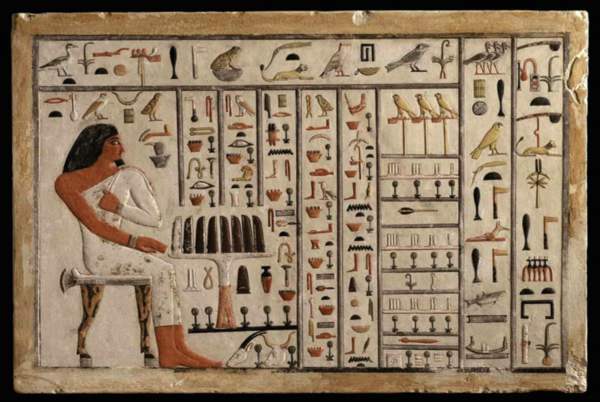The ancient Egyptians were renowned for their advancements in the scientific arts, particularly in medicine and applied mathematics. While much has been written about their medical achievements, the methods they used to arrive at their mathematical conclusions are not well documented.
Nevertheless, their proficiency in engineering, astronomy, and management would not have been possible without a solid understanding of mathematics. In this article, we will explore the ancient Egyptian numbering system and the unique ideograms used to represent numbers.
The ancient Egyptian numbering system encompassed numbers ranging from one to millions and was incorporated into hieroglyphic writing. Unlike modern numerals, the Egyptian numbers were represented by various ideograms.
Interestingly, the Egyptians had developed the first known base 10 numeral system around three millennia before the birth of Christ. This allowed for the representation of both large numbers and small quantities in the form of unit fractions known as the Eye of Horus fractions.
Despite their proficiency in numerical writing, the Egyptian numbering system was not commonly used in everyday life. This was due to administrative texts being written on papyrus or ostraca rather than carved in stone. The majority of texts that did use the Egyptian numeral system employed hieratic notation.
Hieratic notation utilized a different numerical system, whereby symbols were used for numbers one through nine, which were then repeated according to the tens, hundreds, and thousands.
The orientation of the numbers in hieratic notation was flexible, as they could be written from left to right, upside down, or from top to bottom, depending on the situation. Often, the numerical arrangement was varied to achieve aesthetic harmony, and hieroglyphs were included to indicate the type of object that the numbers referred to.
The ancient Egyptians had a sophisticated system of numerals that was integral to their daily life. While hieroglyphs were often reserved for engravings on stone, hieratic notation was used for administrative and accounting texts written on papyrus or ostraca.
This system of numerals was based on a decimal system for integers, where the number 1 was represented by a vertical line, and 9 was represented by nine lines. Symbols for 10, 100, 1,000, 10,000, and 100,000 were similarly represented with repetitions of the symbol for 10.
The ancient Egyptians had names for their numbers, including ua (1), senu (2), jemet (3), fedu (4), diu (5), seresu (6), sejef (7), jemenu (8), pesedyu (9), medyu (10), dyebati (20), maba (30), jem (40), diiu (50), seresiu (60), sefejiu (70), jemeniu (80), pesedyiu (90), shet (100), ha (1,000), dyeba (10,000), jefen (100,000), and jej (1,000,000). However, these names were seldom written, and ordinals were commonly used to write dates. For example, the first was “tepi,” and from two to nine, “nu” was added to the cardinal number to create ordinals, such as “jemetnu” for the third. For numbers over ten, “mekh” was added before the cardinal number, so that “mekh-13” was the thirteenth.
Hieratic notation was widely used in daily life, and examples of hieratic numerals have been found in texts from the archaic period, such as the Abusir papyri of the Old Kingdom. Their mastery of advanced mathematics laid the foundation for modern mathematics as we know it today.
However, the use of hieratic numerals declined after Egypt was incorporated into the Roman Empire, and scribes began to use simpler and more convenient methods of writing, such as hieratic and demotic writing.











